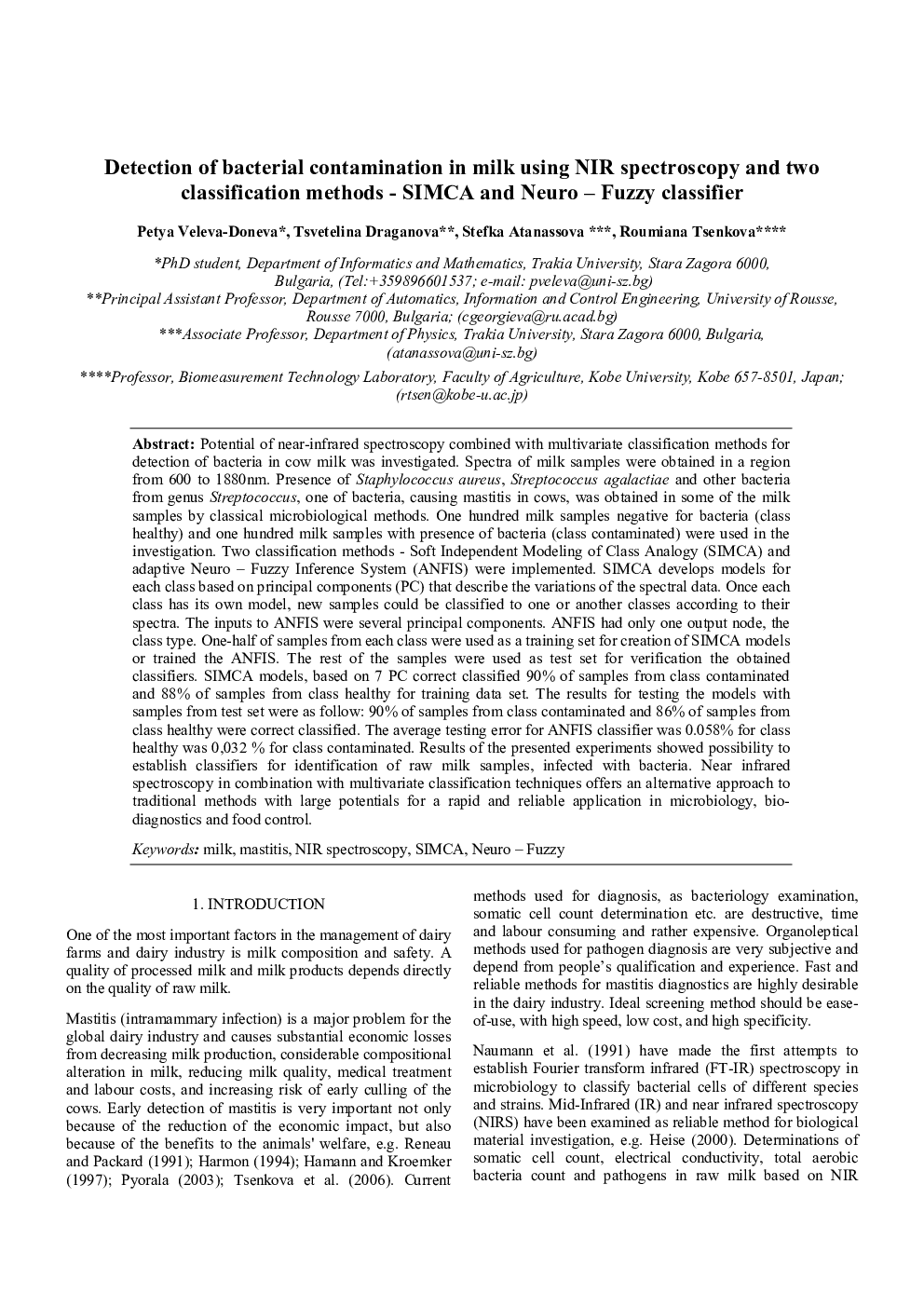| Article ID | Journal | Published Year | Pages | File Type |
|---|---|---|---|---|
| 718807 | IFAC Proceedings Volumes | 2010 | 5 Pages |
Potential of near-infrared spectroscopy combined with multivariate classification methods for detection of bacteria in cow milk was investigated. Spectra of milk samples were obtained in a region from 600 to 1880nm. Presence of Staphylococcus aureus, Streptococcus agalactiae and other bacteria from genus Streptococcus, one of bacteria, causing mastitis in cows, was obtained in some of the milk samples by classical microbiological methods. One hundred milk samples negative for bacteria (class healthy) and one hundred milk samples with presence of bacteria (class contaminated) were used in the investigation. Two classification methods - Soft Independent Modeling of Class Analogy (SIMCA) and adaptive Neuro – Fuzzy Inference System (ANFIS) were implemented. SIMCA develops models for each class based on principal components (PC) that describe the variations of the spectral data. Once each class has its own model, new samples could be classified to one or another classes according to their spectra. The inputs to ANFIS were several principal components. ANFIS had only one output node, the class type. One-half of samples from each class were used as a training set for creation of SIMCA models or trained the ANFIS. The rest of the samples were used as test set for verification the obtained classifiers. SIMCA models, based on 7 PC correct classified 90% of samples from class contaminated and 88% of samples from class healthy for training data set. The results for testing the models with samples from test set were as follow: 90% of samples from class contaminated and 86% of samples from class healthy were correct classified. The average testing error for ANFIS classifier was 0.058% for class healthy was 0,032 % for class contaminated. Results of the presented experiments showed possibility to establish classifiers for identification of raw milk samples, infected with bacteria. Near infrared spectroscopy in combination with multivariate classification techniques offers an alternative approach to traditional methods with large potentials for a rapid and reliable application in microbiology, bio-diagnostics and food control.
